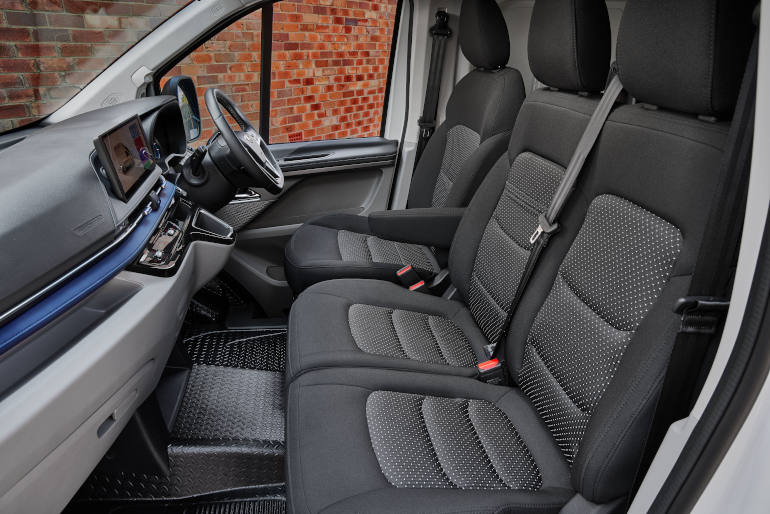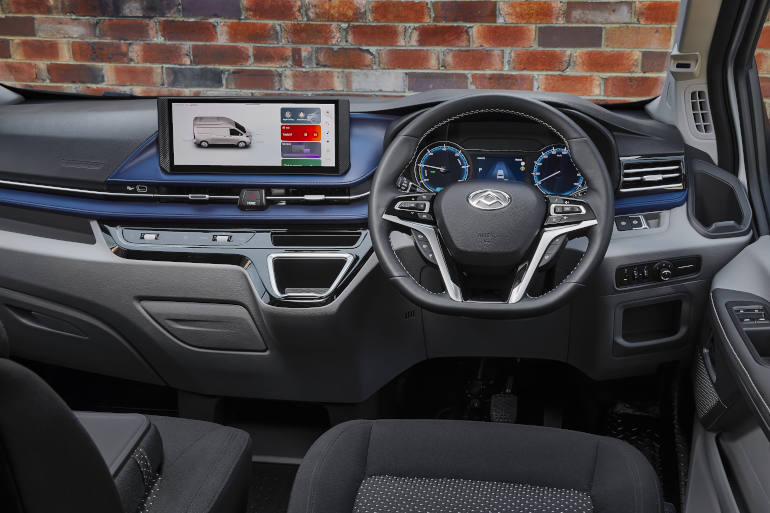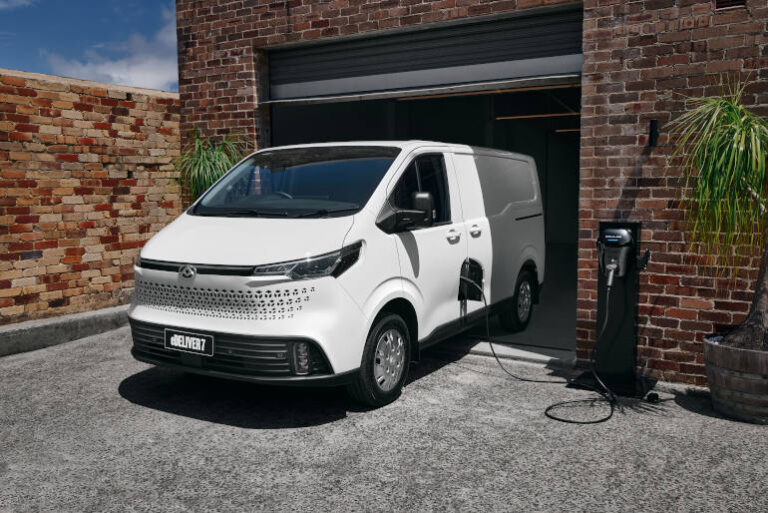If you’re buying a multipurpose vehicle for personal needs, a dual-cab ute makes a helluva lot of sense. But if you are business buying, maybe a van would be a smarter choice.
A van like the new fully-electric LDV eDeliver 7 – which starts from $59,990 and tops out at $66,990 (+on-roads, for ABN holders) – offers more than a tonne of payload (1175kg to 1350kg) across the range, a more daily-friendly drive experience, and the potential long-term benefits of a much more affordable ownership experience.
And while there’s no dual-cab (crew van) choice for those who want to split their rig between work and play, the range offers a view variants to pick from:
- 77kWh SWB Low Roof, 5.9m3 capacity – $59,990 (318km range)
- 77kWh LWB Low Roof, 6.7m3 capacity – $61,990 (310km range)
- 88kWh LWB Low Roof, 6.7m3 capacity – $64,990 (362km range)
- 88kWh LWB High Roof, 8.7m3 capacity – $66,990 (328km range)
Rival diesel vans like the Hyundai Staria Load, Toyota HiAce or Ford Transit Custom all offer similar vans for less money, but you’ll save time and money when it comes to filling up. Your beltline may appreciate the reprieve from servo snacks, too. And there’s a five-year/160,000km warranty for the van and an eight-year/250,000km warranty for the battery pack, with servicing for six years/90,000km totalling just $1165.

Big diesel utes or other oil-burner vans would potentially cost that much just for 30,000km of maintenance, and there’s less down-time too, with long service intervals (24 months/30,000km).
Most utes sold are 4×4 diesel dual-cabs that have serious off-road credentials, but this front-wheel drive electric van doesn’t have any all-terrain specs.
But it does have effortless power delivery with zero lag, no transmission quirks apart from the gear selector being on the steering column, and the steering is more direct and precise than utes in the market. There’s also regen braking with three modes, including one that almost does single-pedal driving, and three drive modes too: Eco (limited to 90km/h), Normal, and Power, which is positively zesty.
Where it’s on par with double-cab trucks is the ride, which – when unladen, as tested – is on the firm side, particularly in the SWB model. The LWB version is slightly smoother, but all of them will be infinitely better with weight over the back axle.
In the cabin there’s way more storage than a twin-cab pick-up, with multi-tier door pockets, cup holders on the dash sides, lots of loose item cubbies and, well, a heap of space behind the seats if you need secure, dry storage.
The controls are relatively simple, though the HVAC buttons are backlit and hard to see in sunlight, and the menus on the 12.3-inch touchscreen take a little learning as well, but there’s Apple CarPlay and Android Auto for phone calls (with good call quality) or podcasts (with reasonable sound).
That screen doubles as a display for the reversing camera – but a surround-view camera would be way better here. They get it in the UK-spec, but we don’t, and that’s a shame because it’s hard to see out of. The standard arrangement is a kerbside sliding door, and barn doors at the back, with no option for rear panel glazing, a tailgate, a driver’s side sliding door, or a bulkhead.
It certainly makes sense if you do the sums for a business, if you and your staff can work within the limitations of the standard cargo zone setup.







